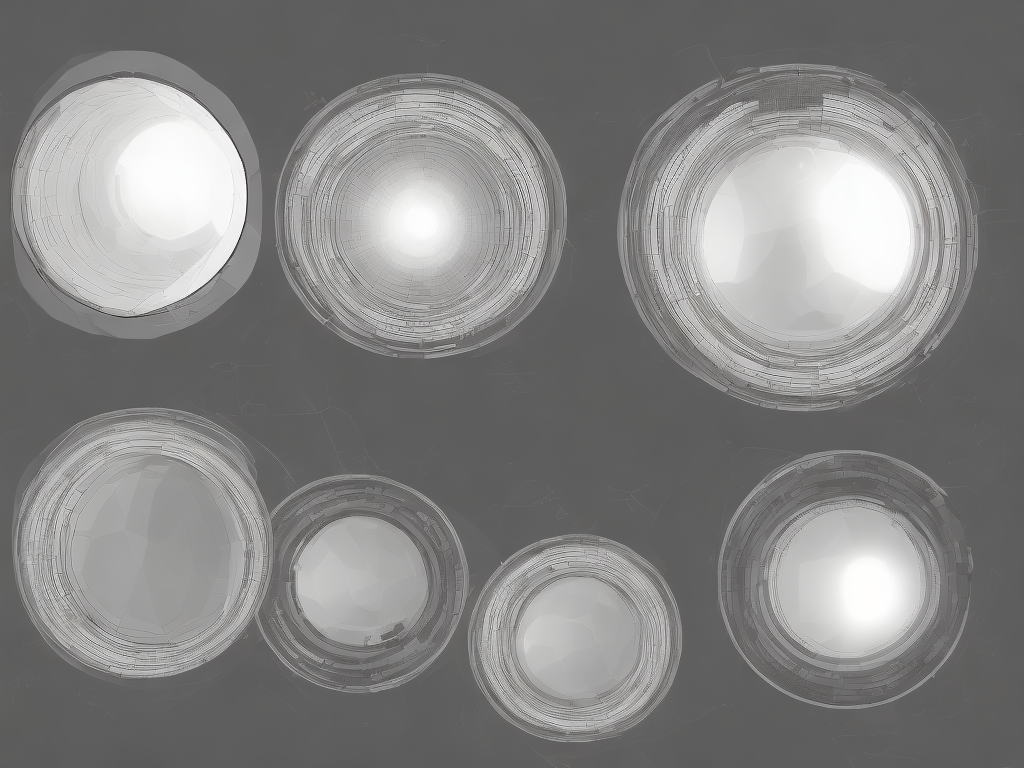
Convex mirrors and convex lenses are both optical devices commonly used in various applications. Despite their similar appearance, they have different properties and uses. This article aims to explain the difference between convex mirrors and convex lenses, focusing on their structure, behavior of light, and practical applications.
Let's start with the structure of these optical devices. Convex mirrors are spherical mirrors with their reflecting surface curved outward like the exterior of a sphere. The reflecting surface bulges outwards, causing light rays that strike it to diverge. On the other hand, convex lenses are transparent optical elements made of a transparent material, such as glass or plastic, with a curved surface on both sides. These lenses are thicker at the center and thinner at the edges, causing light to converge.
Now, let's discuss how light behaves when it interacts with convex mirrors and convex lenses. When light rays strike a convex mirror, they reflect off the curved surface, diverging outward. This means that the image formed by a convex mirror is always virtual, meaning it cannot be projected onto a screen. The image appears smaller and located closer to the mirror than the object itself, giving it a wider field of view compared to flat mirrors. Convex mirrors are commonly used in applications where a wider field of view is required, such as in side mirrors of cars or in surveillance systems.
In contrast, when light passes through a convex lens, its path is refracted, causing the light rays to converge towards a focal point. This means that convex lenses have the ability to form real and inverted images, which can be projected onto a screen. The distance between the lens and the focal point is called the focal length, and it depends on the curvature and refractive index of the lens. Convex lenses are commonly used in various applications, such as magnifying glasses, eyeglasses, cameras, telescopes, and microscopes, where the ability to form real and magnified images is required.
Another important difference between convex mirrors and convex lenses is their effect on the size of objects. Convex mirrors always create an image that is smaller than the actual object. This reduction in size is due to the divergence of light rays upon reflection from the curved surface of the mirror. The image formed by a convex mirror appears to be located behind the mirror, making it look smaller and farther away. This property is particularly useful in applications where a wider field of view is needed, as it allows the observer to see a larger area.
On the other hand, convex lenses can either create images that are smaller or larger than the actual object, depending on the position of the object relative to the lens. If the object is placed beyond the focal point, the image formed by the lens will be smaller than the object. This is called a reduced image. Conversely, if the object is placed closer to the lens than the focal point, the image formed will be larger than the object. This is called an enlarged image. The ability of convex lenses to create both reduced and enlarged images makes them versatile in various applications where magnification is required.
To summarize, convex mirrors and convex lenses are both optical devices used in different applications. Convex mirrors have a curved reflecting surface that causes light rays to diverge, forming virtual images that are smaller and located closer to the mirror than the object itself. These mirrors are commonly used in situations where a wider field of view is necessary, such as in car side mirrors and surveillance systems. On the other hand, convex lenses have a curved shape that causes light to converge, allowing them to form real and inverted images. These lenses can create both reduced and enlarged images, depending on the position of the object. They are widely used in applications such as magnifying glasses, cameras, telescopes, and microscopes. Understanding the difference between convex mirrors and convex lenses is crucial in selecting the appropriate optical device for a specific purpose.
 Self-Instruct
Self-Instruct